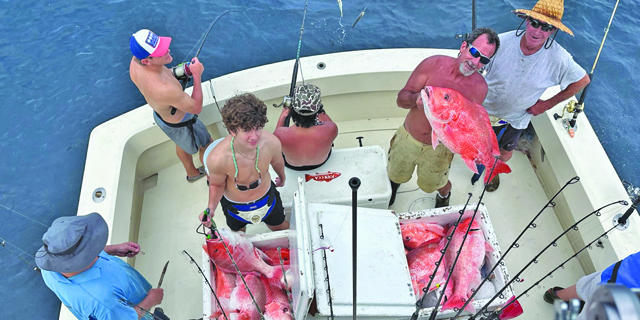OVERTIME OUTDOORS: Duck hunting starts on Nov. 14; will waterfowl be here for the opener?
Published 7:15 am Sunday, November 8, 2020
Most Teche Area duck hunters who enjoy duck hunting to the max have waited for Nov. 14, the day the state’s waterfowl hunting season gets underway in the Coastal Zone and West Zone, since duck hunting ended in those zones Jan. 19 and Jan. 26, respectively.
That Saturday morning six days from today gives them a chance to renew their love for duck hunting. Hopefully, duck hunters will fill out their limit to start the season on a positive note.
Louisiana’s aerial waterfowl population survey has yet to be released. The state Department of Wildlife and Fisheries’ waterfowl study leader, Larry Reynolds, and his staff conduct flights monthly starting in September through January.
The Coastal Zone’s first split ends Dec. 6. The West Zone’s first split also stops Dec. 6.
East Zone waterfowl hunting for the first split begins Nov. 21 and ends Dec. 6.
We’ll have to wait one more week to see those numbers for each species in the southwest and southeast regions of the state, as well as for Catahoula Lake and selected habitats in northeast and northwest Louisiana.
Delta Waterfowl officials forecast larger flights of dabbling ducks compared to last fall, particularly mallards, gadwalls and blue-winged teal.
Delta Waterfowl believes the fast-approaching season will be a good one because of above average breeding conditions in the prairie pothole region in upper North America. That, combined with a stable population of breeding ducks, should lead to a sizeable fall flight starting at the top of the Mississippi Flyway.
Area waterfowlers know that when duck production is poor, Louisiana, Texas and other states in the Mississippi Flyway experience below average duck hunting success, which was the case in a mostly forgettable 2018-19 season in the Sportsman’s Paradise. The Mississippi Flyway includes Louisiana, Alabama, Arkansas, Indians, Illinois, Iowa, Kentucky, Michigan, Minnesota, Mississippi, Missouri, Ohio, Tennessee and Wisconsin, plus the Canadian provinces of Saskatchewan, Manitoba and Ontario.
What the preseason is missing this year is the official forecast from the U.S. Fish & Wildlife Service. Federal officials canceled the 2020 Waterfowl Breeding Population and Habitat Survey, a highly recognized barometer of the fall flight, because of coronavirus pandemic restrictions across the country and in Canada.
However, the North Dakota Game and Fish Department conducted its own survey and estimated a statewide breeding population of 4 million ducks, an 18 percent increase over 2019. The department reported habitat conditions were excellent in the Dakotas, very good in Manitoba and poor in Saskatchewan.
Delta Waterfowl, in a news release at the end of the summer, said mallards took advantage of wet conditions in the Dakotas and prairie Manitoba, good news for the number of greenheads in the Central and Mississippi flyways. Hopefully, again, many of those mallards make it down to the marshes and rice fields of south central and southwest Louisiana.
According to the North Dakota survey, an estimated 872,982 mallards were counted, the 18th-highest index recorded.
As so many area duck hunters found out during the special teal season in September, there were plenty of blue-winged teal. While a good number of them probably have passed through the state by now, the numbers were impressive with a 58 percent jump over 2019.
If you like bringing home gadwalls, the outlook is promising. Approximately 50 percent of the population nests in Saskatchewan’s prairies, where it was fairly dry, but the other half settles in the Dakotas, Delta Waterfowl noted. North Dakota survey results showed breeding gadwalls were up 6 percent to 440,379 birds.
The forecast was less favorable for pintails and canvasbacks, the organization reported. Conditions were far below average for pintails in prairie Saskatchewan, the heart of their breeding grounds. And poor nesting conditions lowered the bar for canvasbacks as their numbers declined by 12 percent. But the breeding population of 203,121 birds still was 72 percent higher than the long-term average.
Duck hunters will find out for themselves what the numbers look like down here compared to previous seasons. Happy hunting! Be safe!
DON SHOOPMAN is outdoors editor of The Daily Iberian.





